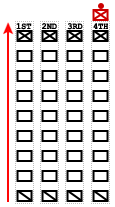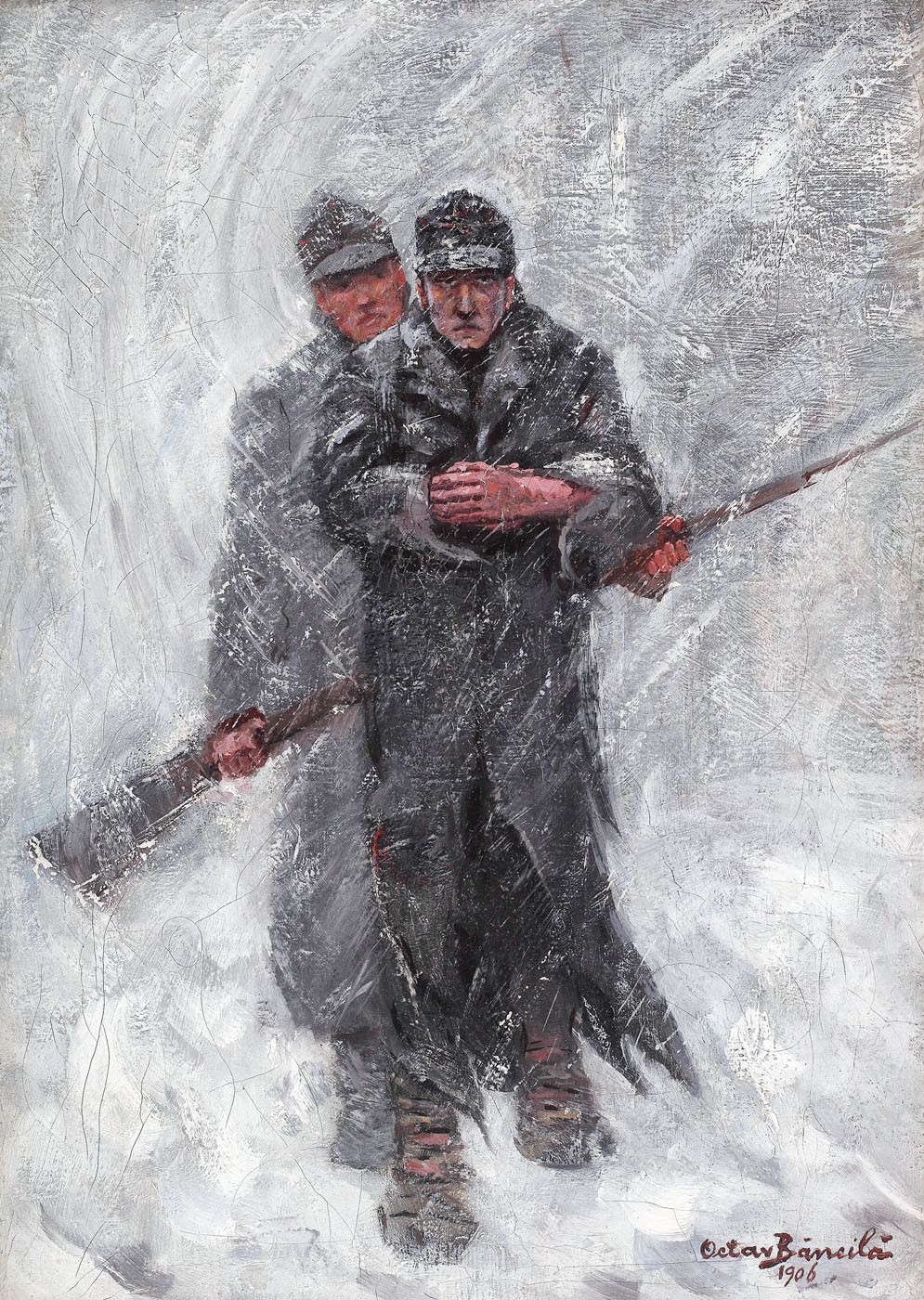|
Battle Of Sarmisegetusa
The Battle of Sarmizegetusa (also spelled ''Sarmizegethuza'') was a siege of Sarmizegetusa, the capital of Dacia, fought in 106 between the army of the Roman Emperor Trajan, and the Dacians led by King Decebalus. Background Because of the threat the Dacians represented to the Roman Empire's eastward expansion, in the year 101 Emperor Trajan made the decision to begin a campaign against them. The first conflict began on March 25 and the Roman troops, consisting of four principal legions, the units X ''Gemina'', XI ''Claudia'', II ''Traiana Fortis'', and XXX ''Ulpia Victrix'', defeated the Dacians, and it thus ended in Roman victory. Although the Dacians had sustained a defeat during the First Dacian War, the emperor postponed the final assault on their capital of Sarmizegetusa to reorganize his troops. Trajan demanded severe concessions from the Dacians and very hard peace conditions: Decebalus, the Dacian king, had to renounce all claims to portions of his kingdom, inclu ... [...More Info...] [...Related Items...] OR: [Wikipedia] [Google] [Baidu] |
Trajan's Dacian Wars
The Dacian Wars (101–102, 105–106) were two military campaigns fought between the Roman Empire and Dacia during Emperor Trajan's rule. The conflicts were triggered by the constant Dacian threat on the Danubian province of Moesia and also by the increasing need for resources of the economy of the Empire. Trajan turned his attention to Dacia, an area north of Macedon and Greece and east of the Danube that had been on the Roman agenda since before the days of Caesar when the Dacians defeated a Roman army at the Battle of Histria. In AD 85, the Dacians swarmed over the Danube and pillaged Moesia and initially defeated the army that Emperor Domitian sent against them. The Romans were defeated in the Battle of Tapae in 88 and a truce was established. Emperor Trajan recommenced hostilities against Dacia and, following an uncertain number of battles, defeated the Dacian king Decebalus in the Second Battle of Tapae in 101. With Trajan's troops pressing towards the Dacian capital Sa ... [...More Info...] [...Related Items...] OR: [Wikipedia] [Google] [Baidu] |
Legio XXX Ulpia Victrix
Legio XXX Ulpia Victrix ("Trajan's Victorious Thirtieth Legion") was a Roman legion, legion of the Imperial Roman army. Their emblems were the gods Neptune (god), Neptune and Jupiter (god), Jupiter and the Capricorn (astrology), Capricorn. ''Ulpia'' is Trajan, Trajan's own ''gens'' (''Ulpia gens, Ulpia''), while the cognomen "''Victrix''" means "victorious," and it was awarded after their valiant behaviour in the Dacian wars. The legion was active until the disbandment of the Rhine frontier in the beginning of the 5th century. History It was founded in AD 100 by the emperor Trajan for service in the Trajan's Dacian Wars, Dacian Wars. The legion's first base camp was in the province of Dacia in the Danube frontier. It is likely that at least some of its legionary, legionaries took part in the Parthian campaigns of Trajan. In 122 they were moved to ''Colonia Ulpia Traiana'' (modern Xanten) in Germania Inferior, where they remained for the following centuries. Their main tasks were ... [...More Info...] [...Related Items...] OR: [Wikipedia] [Google] [Baidu] |
Bistra River (Timiș)
Bistra may refer to: Name Female's name in Bulgaria Populated places * Bistra, Silistra Province, a village in Silistra Province, Bulgaria * Bistra, Targovishte Province, a village in Targovishte Province, Bulgaria * Bistra, Croatia, a village in Zagreb County, Croatia * Bistra (mountain) in North Macedonia * Bistra (peak) in Kosovo * Bistra, Alba, a commune in Alba County, Romania * Bistra, Maramureș, a commune in Maramureș County, Romania * Bistra, a village in the commune Popești, Bihor County, Romania * Bistra, Črna na Koroškem, a village in Slovenia * Bistra, Vrhnika, village and monastery in Slovenia Rivers in Romania * Bistra (Arieș), a tributary of the Arieș in Alba County * Bistra (Barcău), a tributary of the Barcău in Bihor County * Bistra (Bicaz), a tributary of the Capra in Neamț County * Bistra (Mureș), a tributary of the Mureș in Mureș County * Bistra (Sebeș), a tributary of the Sebeș in Sibiu County * Bistra (Timiș), a tributary of the Timiș in Ca ... [...More Info...] [...Related Items...] OR: [Wikipedia] [Google] [Baidu] |
Tibiscum
Tibiscum (''Tibisco'', ''Tibiscus'', ''Tibiskon'') was a Dacian town mentioned by Ptolemy, later a Roman castra and municipium. The ruins of the ancient settlement are located in Jupa, Caraș-Severin County, Romania. See also * Dacian davae * List of ancient cities in Thrace and Dacia * List of castra * Dacia Dacia (, ; ) was the land inhabited by the Dacians, its core in Transylvania, stretching to the Danube in the south, the Black Sea in the east, and the Tisza in the west. The Carpathian Mountains were located in the middle of Dacia. It ... * Roman Dacia Notes References Ancient * * * Modern * * * Further reading * * External links {{Authority control Dacian towns Archaeological sites in Romania Ruins in Romania Historic monuments in Caraș-Severin County ... [...More Info...] [...Related Items...] OR: [Wikipedia] [Google] [Baidu] |
Cerna River (Danube)
The Cerna ( hu, Cserna) is a river in Romania, a left tributary of the river Danube. The Cerna has its source on the south-east side of the Godeanu Mountains and flows into the Danube near the town Orșova. e-calauza.ro The upper reach of the river is sometimes called Cernișoara. With a length of and its basin of , it carves an erosive tectonic valley with numerous gorges, quite deep sometimes. There is a man-made lake on it (Tierna), just before it crosses the spa, to perpetuate the old toponimic od Dierna. The upper course of the Cerna is part of the |
Apollodorus Of Damascus
Apollodorus of Damascus ( grc, Ἀπολλόδωρος ὁ Δαμασκηνός) was a Nabataean architect and engineer from Damascus, Roman Syria, who flourished during the 2nd century AD. As an engineer he authored several technical treatises, and his massive architectural output gained him immense popularity during his time. He is one of the few architects whose name survives from antiquity, and is credited with introducing several Eastern innovations to the Roman Imperial style, such as making the dome a standard. Early life Apollodorus was born in Damascus, Syria, at a time when it was either ruled by Nabataeans, or when they had substantial presence in it, circa 50 or later between 60 and 70 AD. Apollodorus is said to be of Nabataean ethnic extraction himself, and Damascus was part of the Roman Empire during his adulthood. Little is known of his early life, but he started his career as a military engineer before meeting future emperor Trajan in Damascus, then being summoned ... [...More Info...] [...Related Items...] OR: [Wikipedia] [Google] [Baidu] |
Column (formation)
A military column is a formation of soldiers marching together in one or more files in which the file is significantly longer than the width of ranks in the formation. The column formation allows the unit rapid movement and a very effective charge (due to weight of numbers), and it can quickly form square to resist cavalry attacks, but by its nature only a fraction of its muskets are able to open fire. The line formation offers a substantially larger musket frontage than the column, allowing for greater shooting capability, but requires extensive training to allow the unit to move over ground as one while retaining the line. It is also applied by modern armies to vehicles, troops and naval vessels. Napoleonic Wars During the early stages of the French Revolutionary Wars, battalions in French armies often attacked in column formation in an attempt to drive through enemy lines by sheer weight of numbers. Against enemy units already weakened by the fire from skirmishers or artill ... [...More Info...] [...Related Items...] OR: [Wikipedia] [Google] [Baidu] |
Deserters
Desertion is the abandonment of a military duty or post without permission (a pass, liberty or leave) and is done with the intention of not returning. This contrasts with unauthorized absence (UA) or absence without leave (AWOL ), which are temporary forms of absence. Desertion versus absence without leave In the United States Army, United States Air Force, British Armed Forces, Australian Defence Force, New Zealand Defence Force, Singapore Armed Forces and Canadian Armed Forces, military personnel will become AWOL if absent from their post without a valid pass, liberty or leave. The United States Marine Corps, United States Navy, and United States Coast Guard generally refer to this as unauthorized absence. Personnel are dropped from their unit rolls after thirty days and then listed as ''deserters''; however, as a matter of U.S. military law, desertion is not measured by time away from the unit, but rather: * by leaving or remaining absent from their unit, organization, ... [...More Info...] [...Related Items...] OR: [Wikipedia] [Google] [Baidu] |



